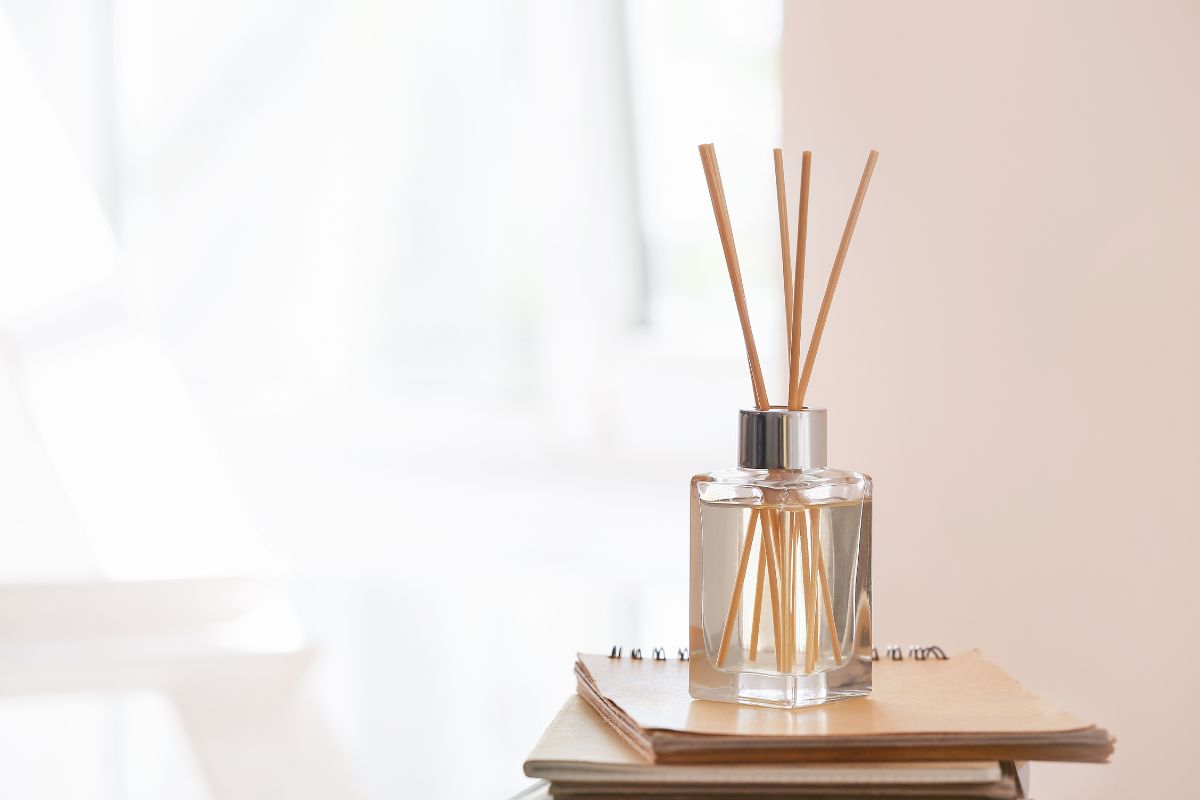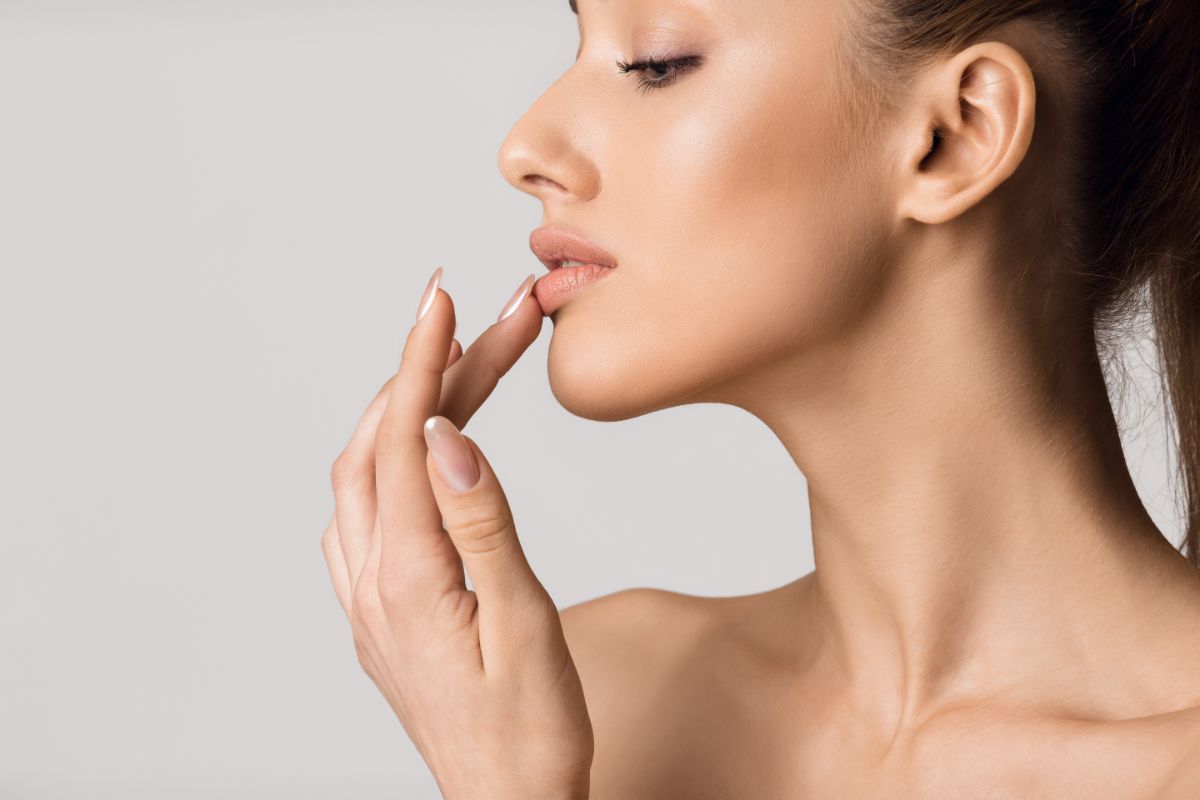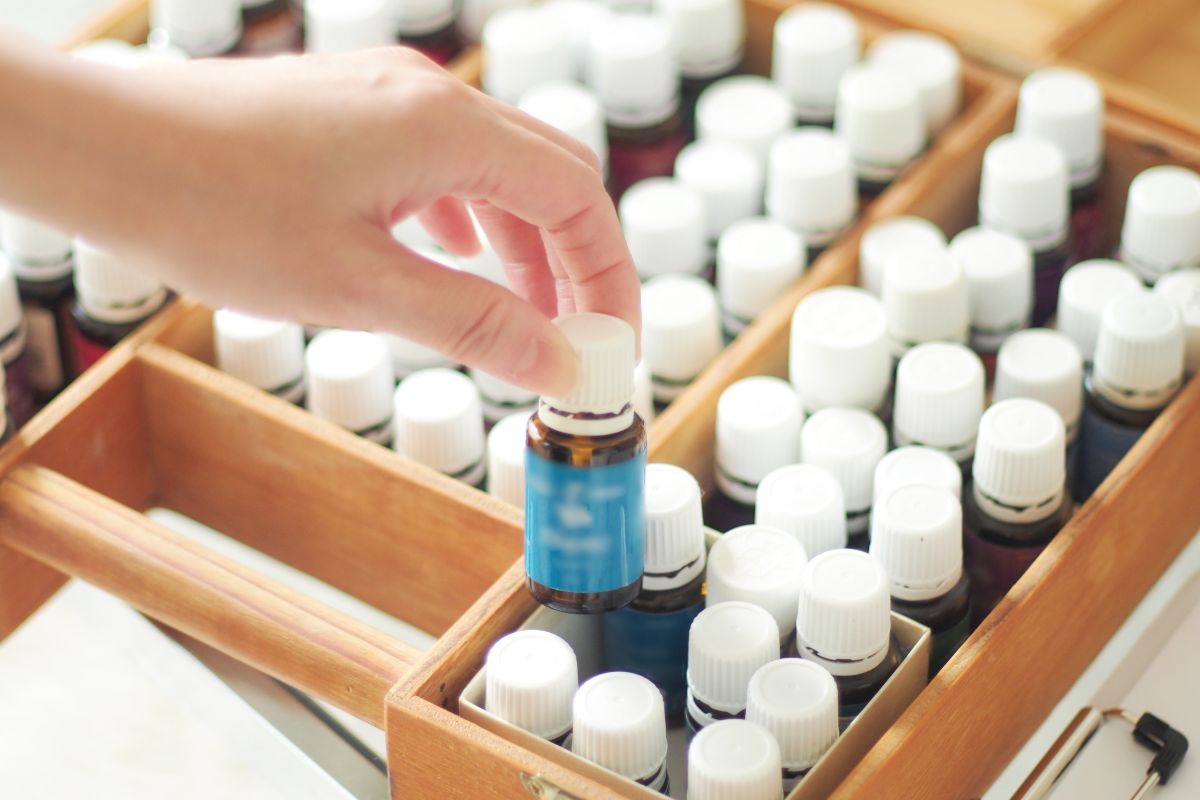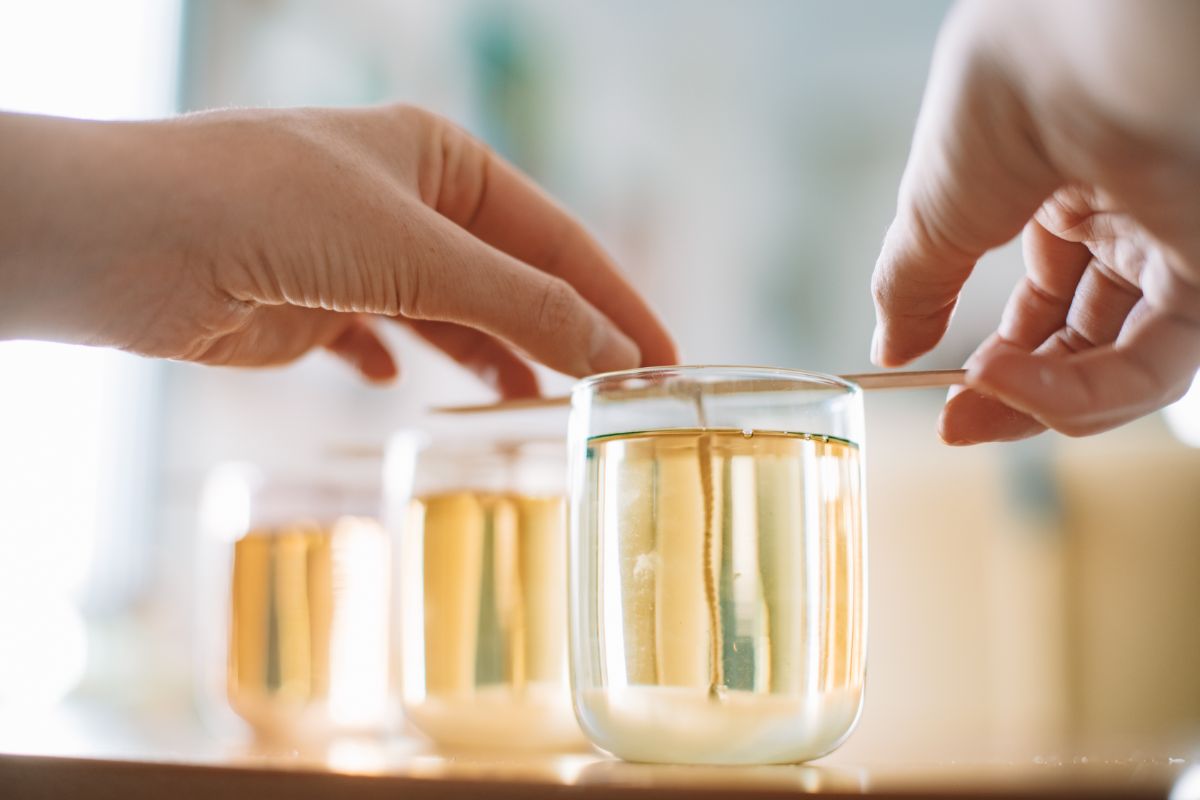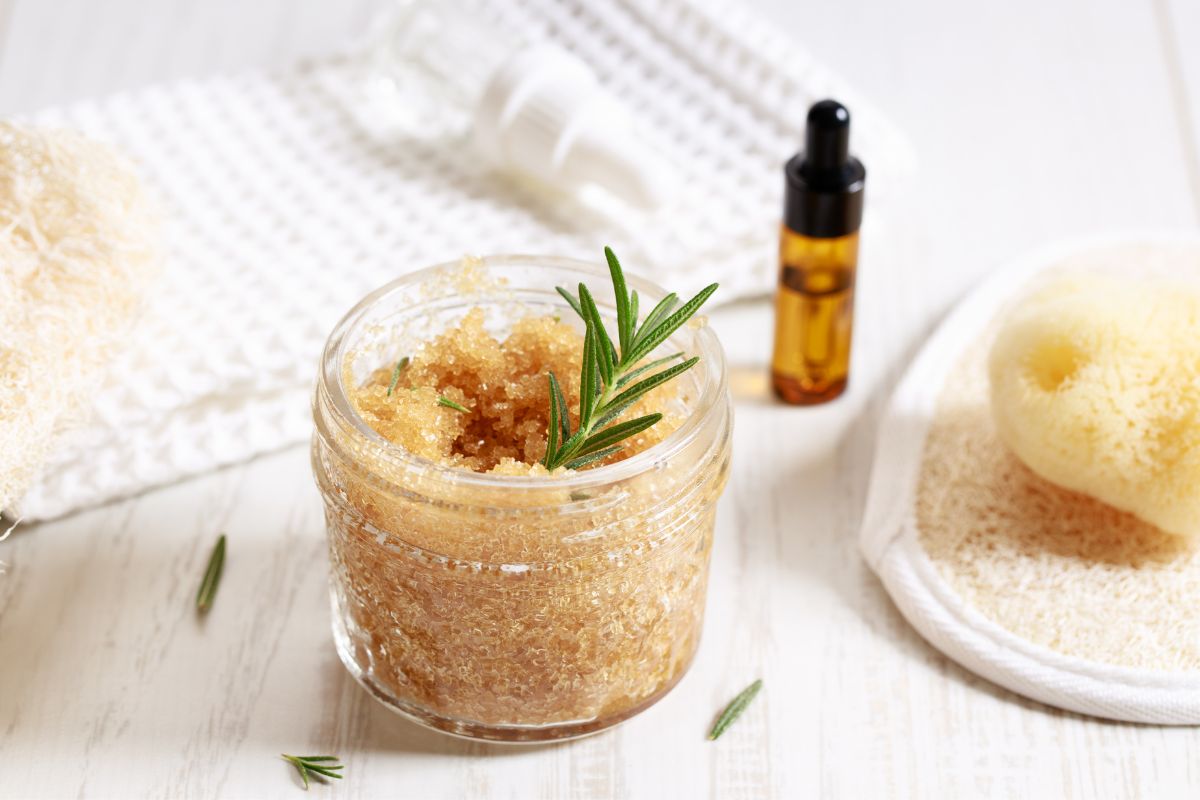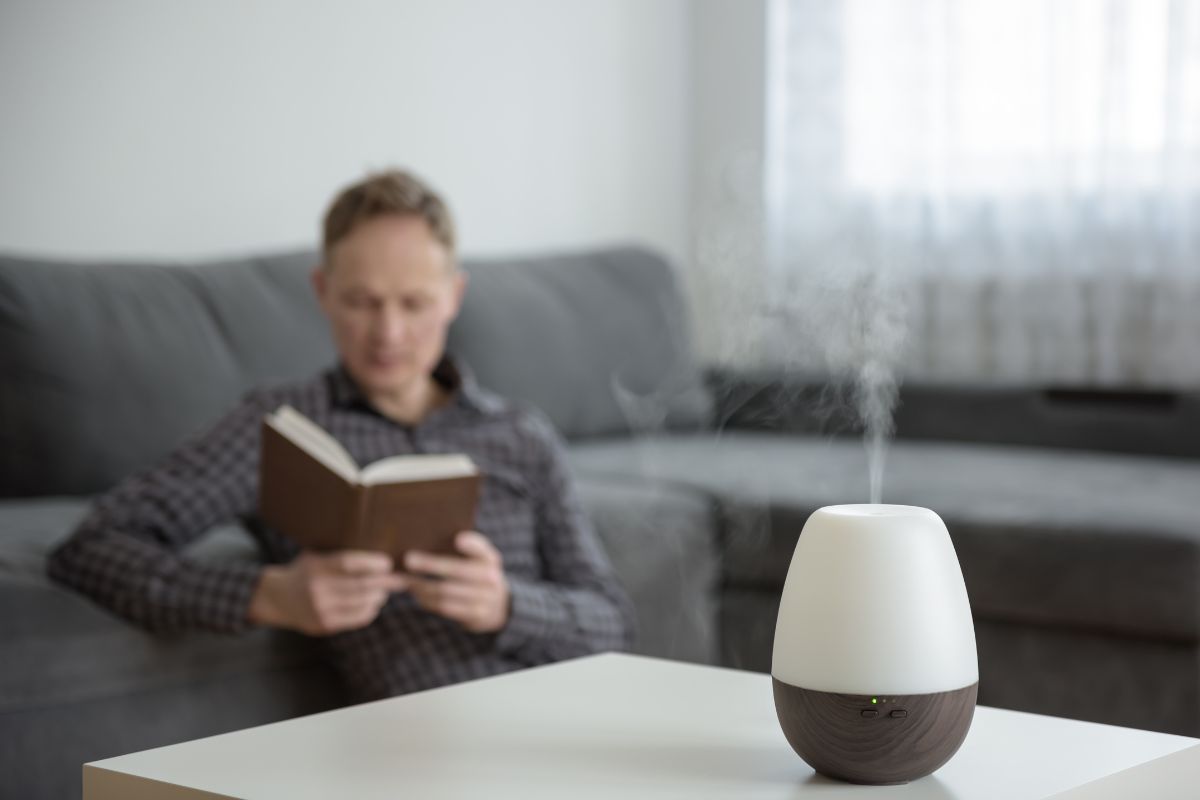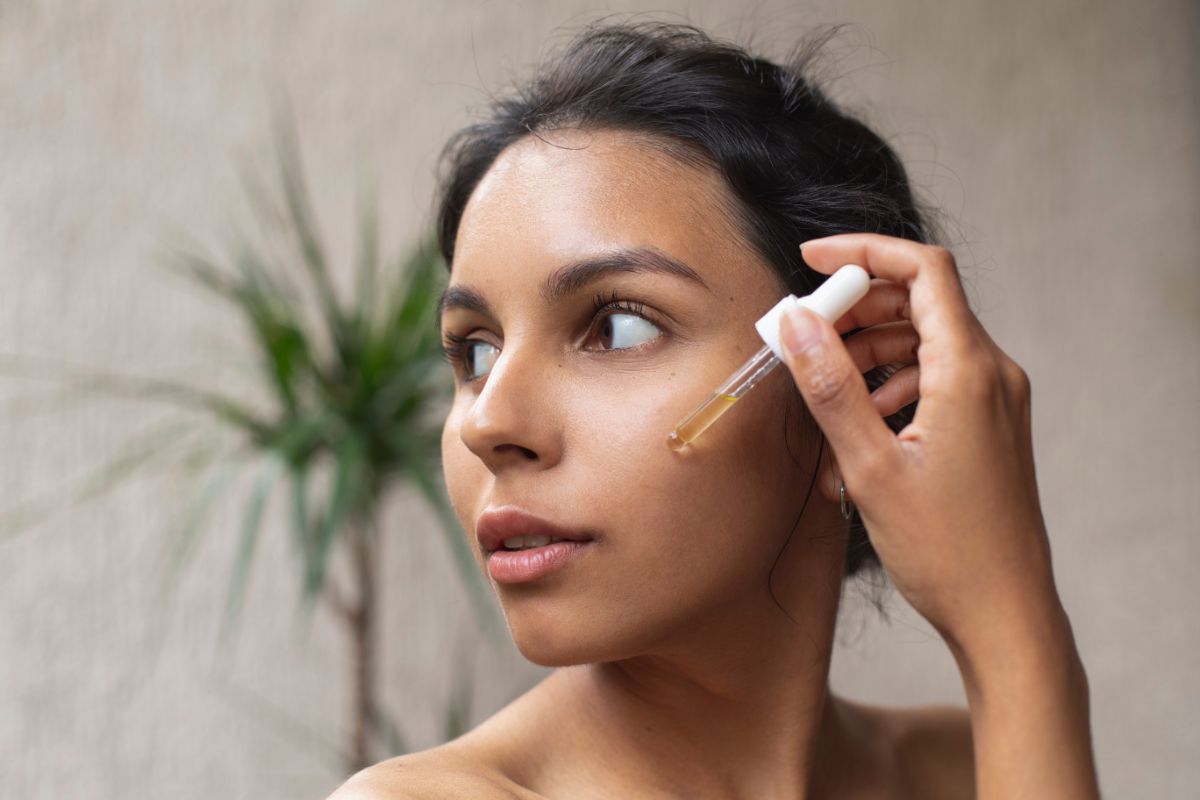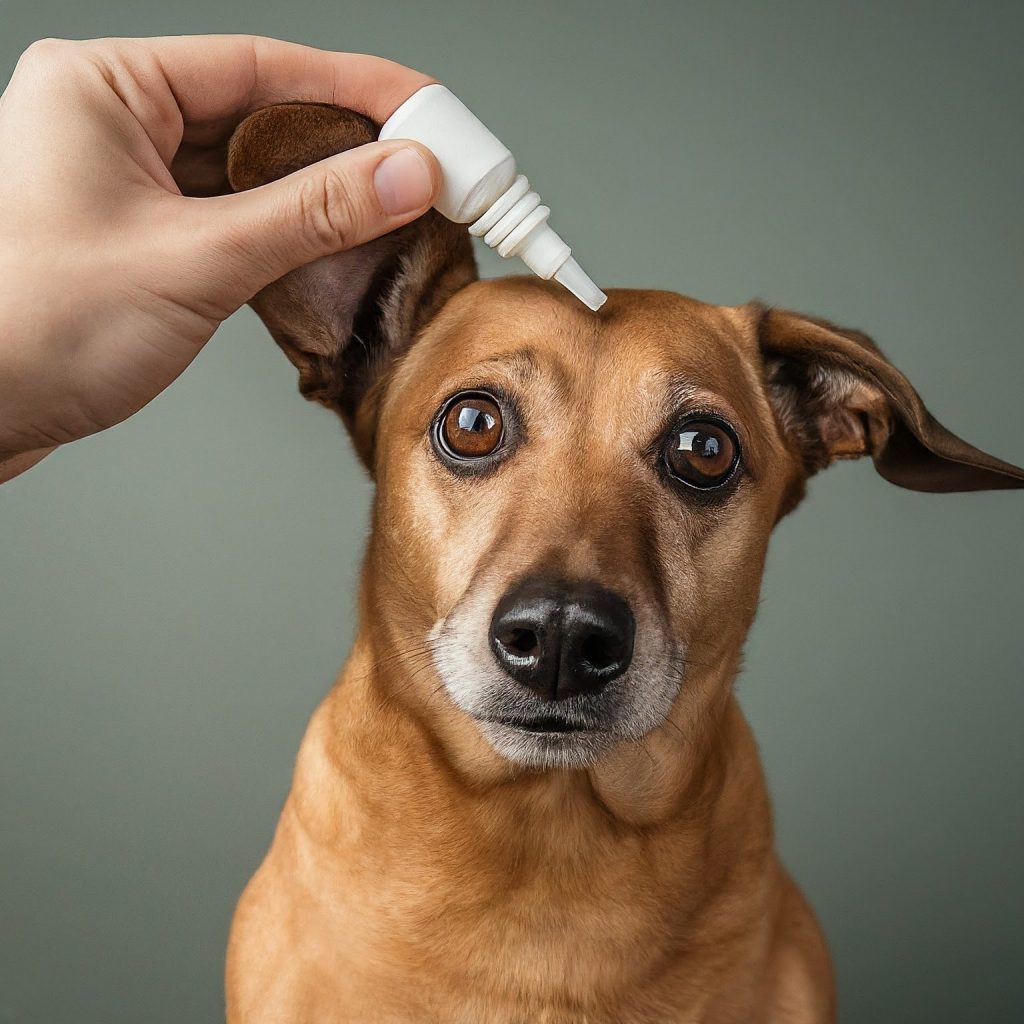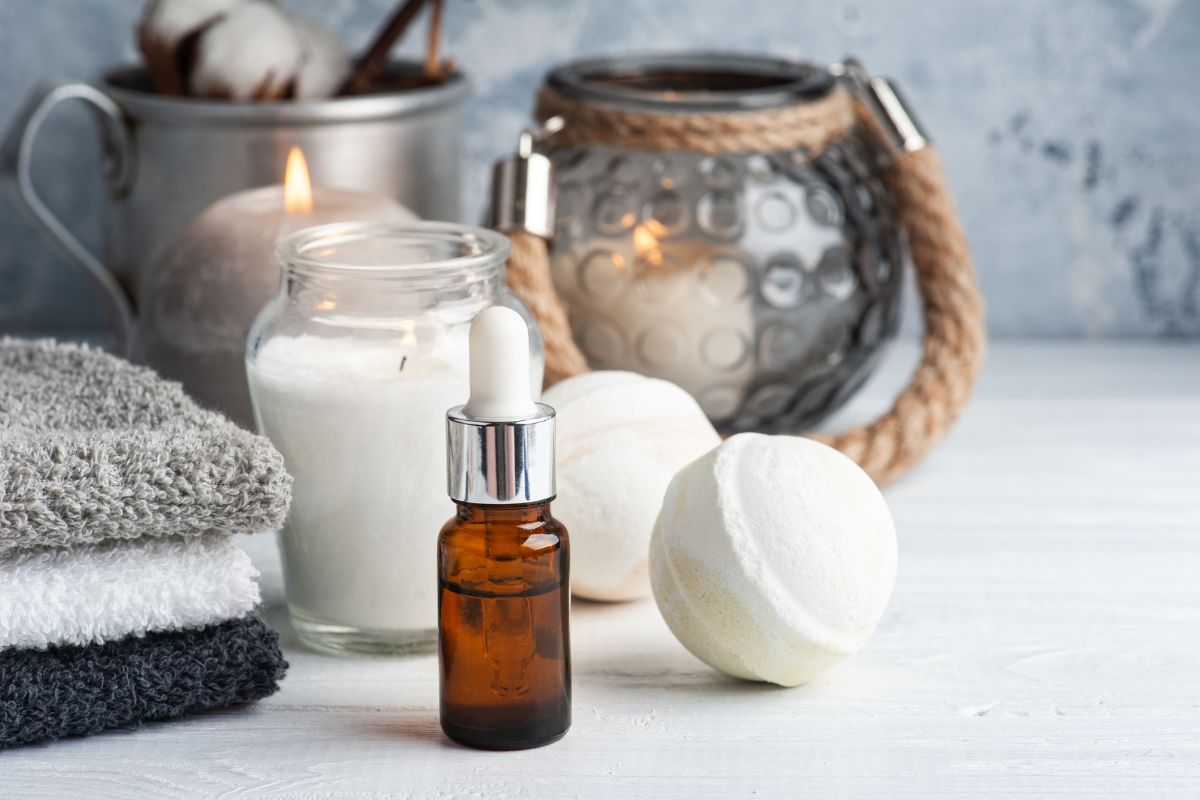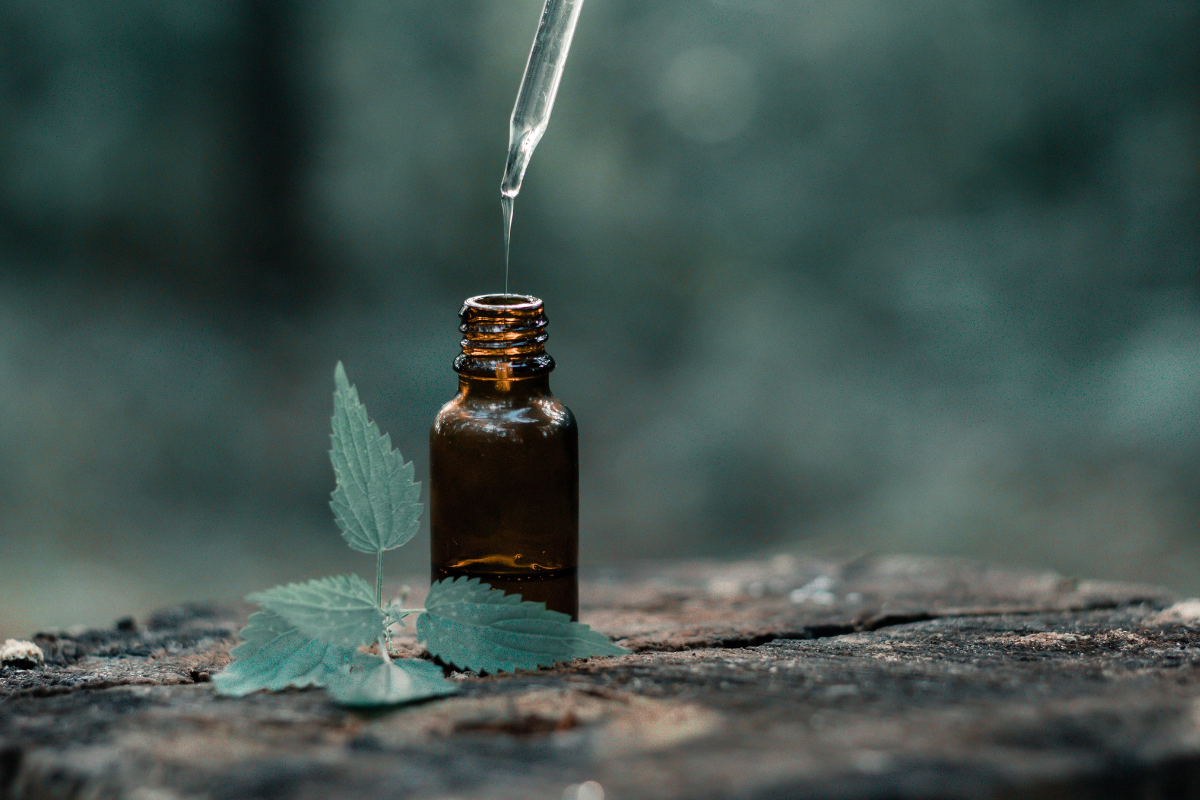Tea tree oil is an incredibly popular and common essential oil that many people gravitate towards when they first get into aromatherapy.

It is a familiar ingredient in many skincare products and can be used as such when making your own products at home.
With that being said, it is incredibly important to dilute tea tree oil before using it in your home or on your body.
It is especially important to make sure that you are diluting the oil correctly to ensure that it is safe to use.
Below we will look at the best ways to dilute tea tree oil and what to use.
Why Do You Need To Dilute Essential Oils?
Essential oils are well known for their multiple health and well-being benefits. They are incredibly potent which is what makes them so useful.
However, because of this potency, they can also cause irritation and adverse effects when they are applied to the skin.
Tea tree oil in particular is known for the irritation that it can cause when applied to the skin.
When tea tree oil is undiluted it is associated with skin sensitization.
This is essentially an allergic reaction that occurs when a chemical is applied topically to the skin.
The maximum dilution ratio of tea tree oil is 3%. This means that no more than 3% of your solution should be tea tree oil.
For example, in 100 ml of carrier oil, there should be only 3 ml of tea tree oil.
The maximum dilution ratio is a measure that should never be exceeded for safe usage, but it is possible to go below this ratio and still be safe.
What Is Tea Tree Oil?
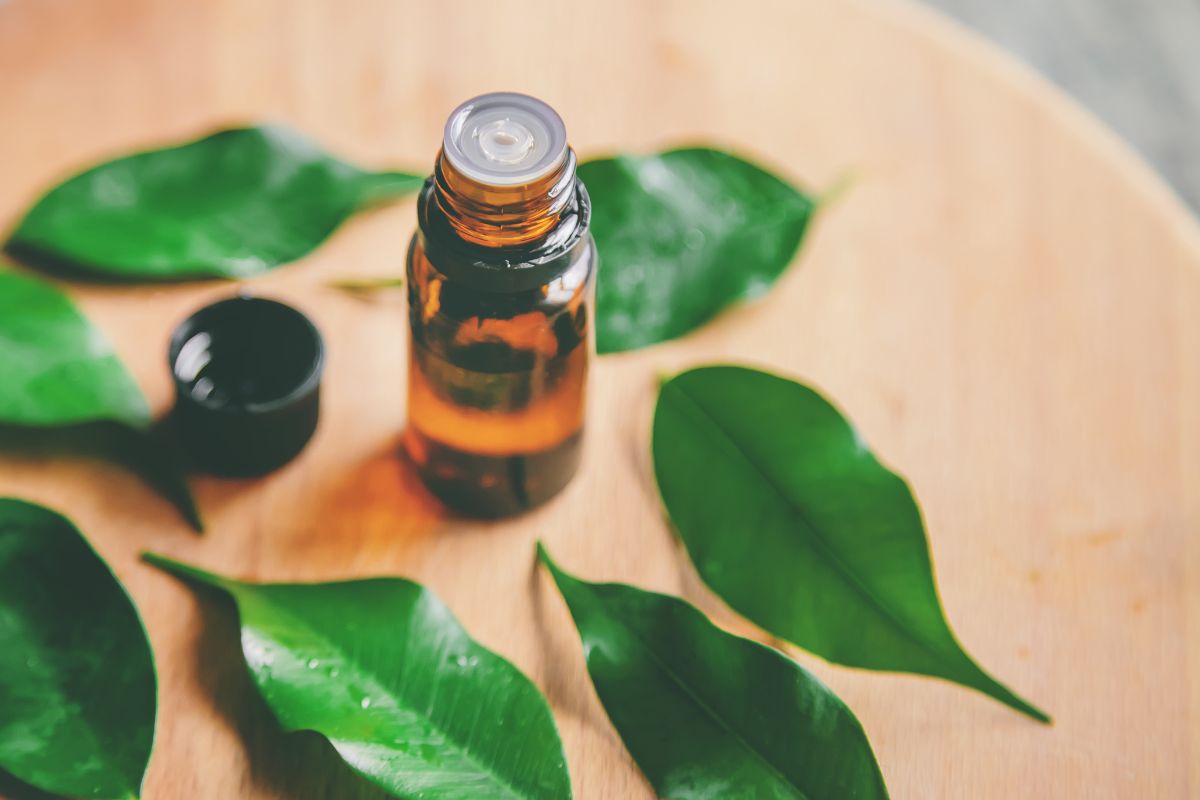
Tea tree oil is one of the most popular essential oils that people use in aromatherapy.
The oil is made from the leaves of the Melaleuca Alternifolia tree.
This tree is native to the low-lying wetlands in the northern region of New South Wales in Australia.
The tree was used by the indigenous peoples of Australia to make traditional, natural medicines and remedies.
It has always been the leaves and branches specifically that were used and they were prepared by being brewed in hot water.
It has always had many uses for health and skincare.
Because of the long history of being used by indigenous Australians, very little research and development had to be put into tea tree oil.
Instead, we have a common and powerful essential oil that is antifungal, anti-inflammatory, antibacterial, antimicrobial, and antiseptic.
Best of all, it is also free of artificial chemicals.
How To Dilute Tea Tree Oil In A Carrier Oil
One of the most common ways to dilute tea tree oil for topical applications is to use a carrier oil.
If you are new to aromatherapy, you might not have come across carrier oils before.
In short, a carrier oil is a gentle oil, usually from a vegetable or plant, that is used to dilute or carry the essential oil safely to the skin.
It is often understood that carrier oils are the best way to dilute essential oils for topical applications.
This is because it doesn’t negatively affect the results that can be garnered from the essential oil.
In fact, it can actually help to enhance the overall effect by providing extra moisture.
When diluting essential oils with a carrier oil, it is important to make sure that you remember the maximum ratio for tea tree oil and do not exceed it.
To do this, it is necessary to measure the amount of carrier oil you use and the amount of essential oil that you add.
Simply add the carrier oil to the container that you are going to use, add the correct number of drops of tea tree oil to the carrier and you are ready to go.
You can always put the lid on and shake the container to mix the oils properly.
Best Carrier Oils For Tea Tree Oil
There is a plethora of different potential carrier oils that can be used with tea tree oil. Below is a selection of different carrier oils and their benefits.
Almond oil is one of the most popular carrier oils for essential oils. It is a very gentle oil that has strong moisturizing properties.
It also features a slightly sweet almond aroma that blends really well with essential oils such as tea tree oil.
If you find that tea tree oil reminds you too much of acne face washes, adding almond oil can lessen that for you.
Avocado oil is another super popular carrier oil that comes with its own benefits besides being a carrier.
Avocado oil is well known for its antioxidant and anti-inflammatory properties.
These properties can help to keep your skin smooth, soft, and elastic. It is also known for helping to calm itchy skin and protect against skin damage.
Avocado oil does have a slightly earthy aroma that blends well with tea tree oil.
Coconut oil is the next most popular carrier oil for essential oils.
It is important to note that you will need coconut oil in a liquid form to use it as a carrier oil.
Coconut oil is already popular as a skincare product because it has plenty of benefits for your skin.
Coconut oil has been shown to help reduce the appearance of sun damage on the skin and leaves it feeling smooth and youthful.
Jojoba oil is a carrier oil that you are likely to hear a lot about in aromatherapy circles.
There are so many benefits to using jojoba oil as a carrier of tea tree oil. Tea tree oil has a reputation for being used on acne-prone skin.
This is because of its antibacterial properties.
Jojoba oil also contains antibacterial properties which help to promote the healing and prevention of acne.
It is also incredibly soothing and can help reduce signs of aging.
There are plenty of other carrier oils that you can use as well.
Just make sure that the oil is suitable for use on the skin and remains in liquid form at room temperature.
How To Dilute Tea Tree Oil In A Carrier Butter
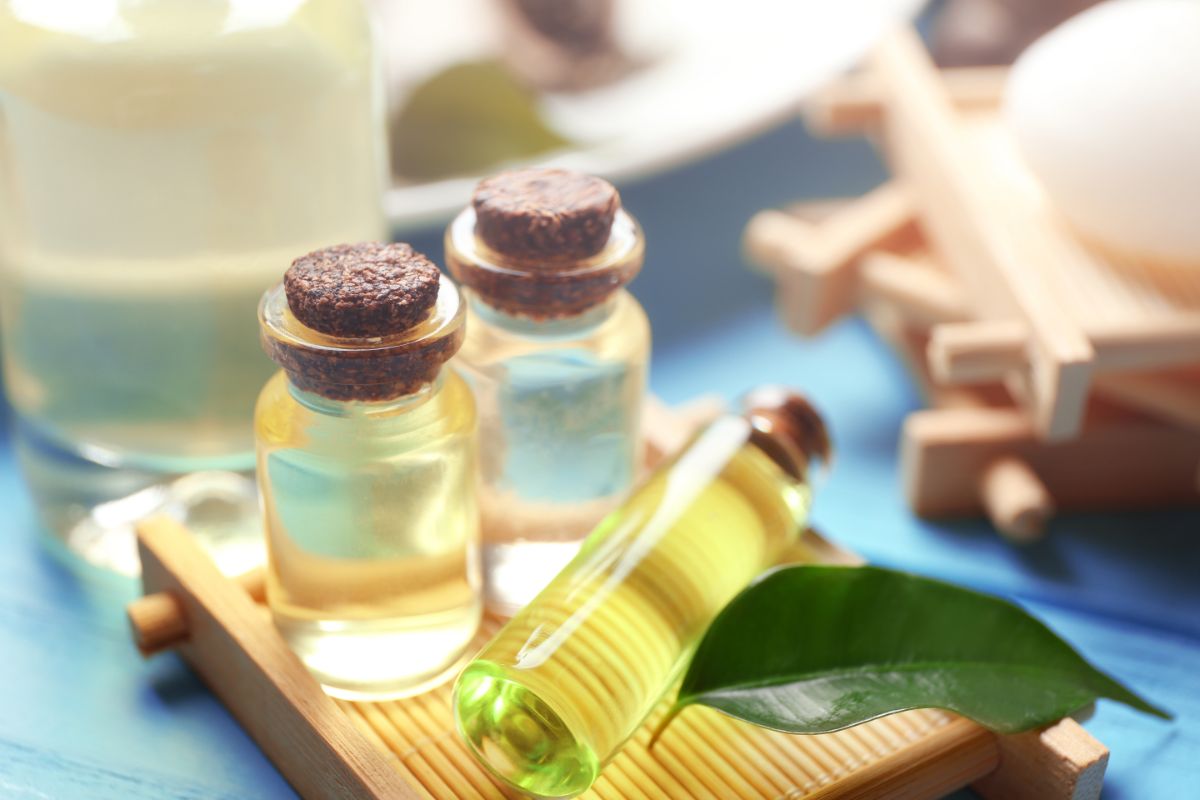
Although carrier oils are the most popular way to dilute essential oils, carrier butter can also be used.
A carrier butter works in the same way as a carrier oil.
When mixing essential oils into the butter, it is still important not to exceed the 3% maximum ratio.
Another important thing to remember when you are adding essential oils to a carrier butter is that the kinds of butter used on the skin are quite heavy and thick.
This means that you may end up absorbing a smaller amount of essential oils than you would with a carrier oil.
Absorbing a smaller amount of essential oils may seem like a significant negative.
However, it can be a good thing if you are particularly concerned about developing skin sensitization.
It can also provide peace of mind if you have sensitive skin.
Mixing tea tree oil into a carrier butter is slightly different from adding it to a carrier oil.
The first thing that you need to do is to place the amount of butter you are using into a bowl.
Then you will need to stir or beat the butter to warm it up so that it softens and is more likely to mix with the essential oil.
Keeping within the 3% ratio of dilution, add the correct amount of essential oil to the butter and thoroughly mix it together before placing it into an airtight container.
Best Carrier Butters For Tea Tree Oil
Similar to the carrier oils that we talked about above, there are many different kinds of carrier butter that you can use to help make the most of your topical solution when you apply it.
Below are some of the most popular types of carrier butter for tea tree oil.
Shea butter is one of the most popular types of carrier butter that people use with any topical essential oil.
Using shea butter to dilute tea tree oil helps to enhance the beneficial properties of the oil.
Shea butter is naturally anti-aging and helps to provide relief from itchy, irritated skin, dry skin, and irritation from shaving. It can also help to treat acne and other blemishes.
Cocoa butter is another incredibly popular carrier butter that works really well when diluting tea tree oil.
Not only does cocoa butter have the ability to boost the healing and cleansing properties of tea tree oil, but it also brings some extra benefits.
Cocoa butter is known for its ability to prevent skin aging.
It can also help to reduce the appearance of scars and sun damage, leaving your skin looking fresh and youthful.
Mango butter is a slightly lesser-known carrier butter but it is bursting with benefits for your skin when using it to dilute tea tree oil.
Mango butter is commonly used to help treat skin disorders such as rashes, sunburn, and minor wounds.
It can also be used to heal blemishes such as acne scars and sun spots. This works hand in hand with the antibacterial benefits of tea tree oil.
Mango butter can also be very soothing for sensitive skin.
Again, this is not an exhaustive list of carrier butters that you can use.
Any type of butter that is designed to be applied to the skin can be used as a carrier for tea tree oil (see also “Best Oil For Gua Sha Massage“).
Butters that are derived from plants and vegetables are always a safe bet. The more natural the butter, the better.
How To Dilute Tea Tree Oil In Other Carrier Materials
While carrier oils and butter are the most popular ways to dilute essential oils such as tea tree oil, they aren’t the only options.
There are plenty of different materials that you can use to dilute your tea tree oil. Below are some of the most popular options.
Lotions And Creams
It is very popular to dilute essential oils with lotions and creams, especially if the oil has an aesthetic benefit for the skin.
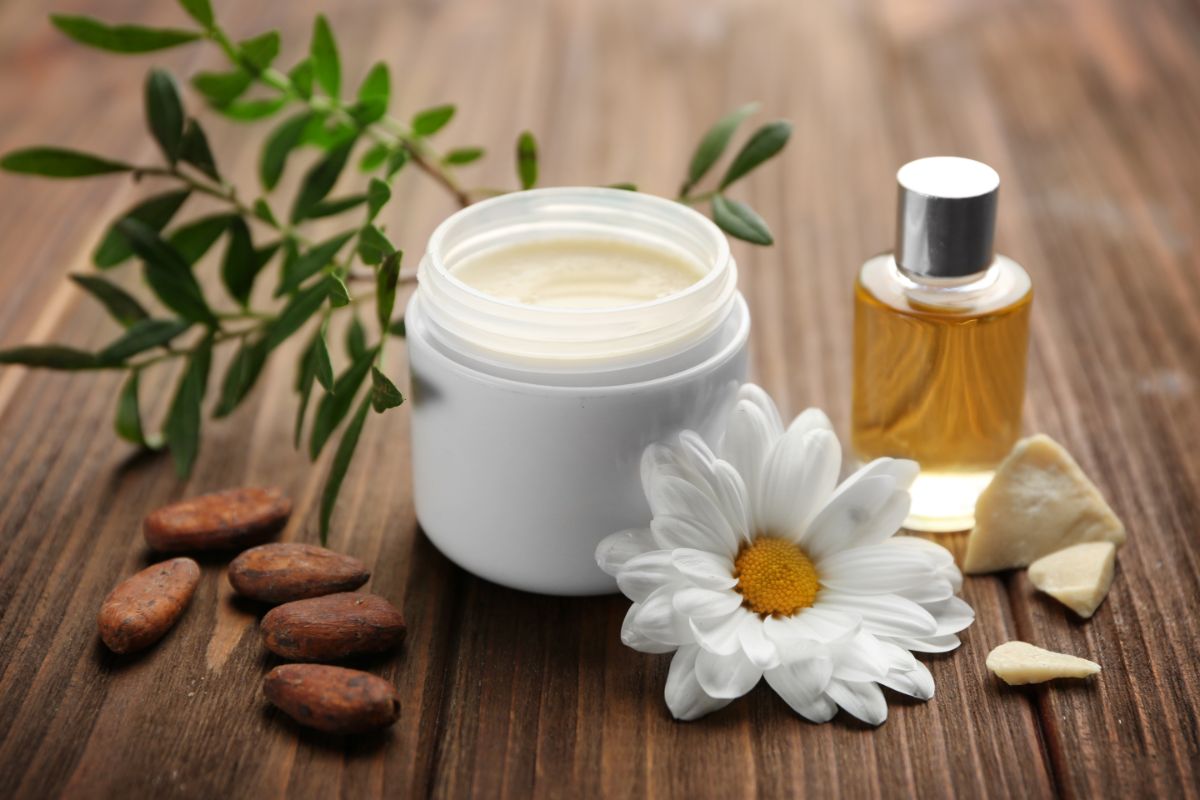
It is incredibly easy to add tea tree oil to creams and lotions that you already apply to your skin.
It is best to start with a fresh container of the lotion or cream that you use on your skin.
This allows you to know how much lotion you have to help you work out the dilution ratio you need without having to transfer it to another container or bowl.
Once you have worked out the dilution ratio for the tea tree oil, it is time to add the appropriate amount of essential oil to the cream.
If you are adding the oil to a bottle of lotion, it can be a good idea to warm the container on a radiator to help the oil mix into the product.
Then simply shake the bottle to mix it before applying it to your skin.
If you are using cream in a pot, you can simply stir the tea tree oil into the product without having to warm it first.
Shampoos
Tea tree oil is a very popular essential oil to add to shampoos. It has been proven that tea tree oil can help to treat and prevent dandruff.
Again, this is easier to dilute when you have a new and full container of shampoo.
If you don’t, simply way the container to help you work out the correct dilution ratio.
You can add the correct amount of tea tree oil to the shampoo container and give it a thorough shake before using the product.
Continued use of shampoo with tea tree oil in it can help to completely cure mild to moderate cases of dandruff.
It can also help to prevent the return of dandruff.
If your dandruff is caused by a sensitive or dry scalp, you may want to test tea tree oil shampoo mixtures on a small area of your scalp first to help avoid any adverse reactions to it.
Aloe Vera Jelly
Another popular carrier to dilute tea tree oil is aloe vera jelly.
The first thing to note about this method is that you can use fresh jelly straight from the plant, or you can use packaged jelly from a health or beauty store.
Tea tree oil works really well with aloe vera jelly thanks to their similar benefits for the skin.
Both of these products are good for calming and soothing the skin when it is irritated, dry, itchy, or inflamed.
Aloe vera jelly is also great for supporting skin regeneration and combating the signs of aging.
Mixing tea tree oil into an aloe vera jelly carrier is similar to adding it to shampoo.
Once you have weighed the amount of aloe jelly, you can work out the appropriate amount of tea tree oil to stay within the maximum ratio.
Simply add the essential oil to the jelly and mix it together. If the bottle allows, you can do this by pushing the jelly around through the container.
Castile Soap
Another popular carrier agent for tea tree oil is castile soap. By itself, castile soap is incredibly beneficial for your skin and its appearance.
However, adding tea tree oil to the castile soap is a surefire way of boosting the benefits that you can see from this gentle soap.
Castile soap is often used in household first aid to clean wounds. It is an incredibly effective means of keeping an open wound free from infection until it can be closed.
It also makes a great daily soap because it is gentle on the skin.
It naturally has antibacterial properties and can protect the skin from sun damage and other toxins.
Castile soap can be used as a carrier for tea tree oil depending on the form that it comes in.
Castile soap can be bought in many different forms, but in order to be used as a carrier, it needs to be in liquid form which often comes in a plastic bottle that has a removable lid.
Once you work out the dilution ratio of the amount of soap you have, simply add the appropriate number of drops of tea tree oil to the bottle.
Place the lid back on and shake the bottle for a while to help the oil disperse through the viscous soap before use.
Tea Tree Oil Dilution Ratio
We have talked about the dilution ratio of tea tree oil a lot throughout this article.
The most important thing to remember when diluting this essential oil is the maximum dilution ratio.
Going over this ratio can cause irritation and adverse reactions for your skin when it is applied.
Although the maximum dilution ratio never changes for essential oils, the ultimate ratio of oil to the carrier can be altered depending on the intended use of the topical solution.
The more tailored the dilution ratio, the better a solution will be for its intended purpose.
Dilution Ratio For Skin
Applying tea tree oil topically to the skin is one of the most popular ways to use this essential oil thanks to its antibacterial properties and effect on acne and blemishes.
The general rule with diluting any essential oil is that less is more.
You can always apply more of a solution to your skin but applying essential oils that are too concentrated can burn your skin.
If you are preparing a product or solution that you are going to use on your face, the recommended dilution ratio is between 0.2% and 1.5%.
This means that if you have 100 ml of carrier oil, you will need to add between 0.2 and 1.5 ml of tea tree oil to it.
If you are preparing a solution that you are going to use on other areas of skin that may not be as sensitive or delicate as your face, you can use a dilution ratio of between 1.5% and 3%.
So, for 100 ml of the carrier, you would add 1.5 to 3 ml of essential oil.
Dilution Ratio For Hair
Tea tree oil has long been lauded for its effectiveness in reducing dandruff and stimulating hair growth.
Therefore, it is an incredibly popular option for adding to shampoos and other topical hair care products.
The scalp is an area of skin that is often quite sensitive, especially if you suffer from dandruff.
The dilution ratio that should be followed when applying tea tree oil to your hair and scalp is the same as for the face.
The ratio should sit somewhere between 0.2% and 1.5%. Again, if you have 100 ml of shampoo, you should add between 0.2 and 1.5 ml of tea tree oil.
Dilution Ratio For Bath
Tea tree oil has a distinctive and refreshing aroma which often gets overlooked in the world of aromatherapy.
However, tea tree oil can be useful when added to bath water to help enhance your bathing routine.
It is important to note that tea tree oil should never be added directly into the bath water because oil and water do not mix and your skin will be exposed to neat essential oils.
To safely add essential oil to your bathtub, make sure that you are diluting it with a carrier that will not dissolve in the water.
The dilution ratio for adding tea tree oil to a bath is slightly different than the preparation for topical applications.
You can use either a carrier oil or castile soap for this.
Simply take a tablespoon of oil or liquid castile soap and add 5 – 20 drops of tea tree oil. Simply add this mixture to the bath water.
If you use castile soap for this, it will blend with the water and be diffused throughout the bath (see also “Bedtime Diffuser Blends For A Blissful Night’s Sleep“).
If you use a carrier oil, the mixture will sit on the surface of the water, but it will still be soaking into your skin and protecting it.
Dilution Ratio For Children And Teens
There are occasions when you might want to dilute tea tree oil for topical use on your children’s skin to help heal rashes, wounds, and acne.
Children and babies have much more delicate skin than adults and absorb substances much more easily.
Because of this, the dilution of essential oils is different and it is important to follow limits carefully to protect their sensitive skin.
Below is a guide to recommended dilution ratios by age.
0 – 3 months old infants should only be exposed to topical solutions that contain 0.2% dilution or less.
With babies this young, their skin is super sensitive and delicate. The lower the amount of essential oils that are used the better.
3 – 24 months old babies have slightly stronger skin. At this age, essential oils should be diluted to a ratio of between 0.25% and 0.5%.
Exceeding this ratio can cause discomfort and irritation to their skin.
2 – 6 years old children have much thicker skin than babies and infants. At this point, it is possible to use a dilution ratio of between 1% and 2%.
If your toddler has sensitive skin or skin conditions, it is best to keep the dilution ratio lower.
6 – 15 years old children and teens generally have skin that can handle a dilution ratio between 1.5% and 3% which is the maximum dilution ratio for tea tree oil.
This can be a good solution to help heal cuts, grazes, and acne.
Benefits Of Diluted Tea Tree Oil
We have briefly mentioned throughout this article some of the benefits that you can get from using tea tree oil topically in your everyday routines or to treat specific issues.
Below we will look at some of the greatest benefits of using diluted tea tree oil.
Colic/Stomach Cramps
One of the most impressive benefits of tea tree oil is that it has shown an ability to relieve the pain and discomfort associated with colic and stomach cramps.
This is great news for parents who have had to deal with a colicky baby before.
If your infant is over the age of 6 months, you can use a very weak solution of tea tree oil and a gentle carrier oil to help massage your baby’s abdomen to help relieve the discomfort and pain and get things moving for them.
Simply use the solution to gently massage the baby’s abdomen in a clockwise direction around the belly button.
As you move your hands out towards the sides of the body, very gently tilt and lift the pelvis and lower them back down.
Repeating this process around ten times before returning to the abdominal massage can help to relieve colic.
If your baby is distressed or cries when you touch their abdomen, you should seek medical advice from your family doctor to check that it is just colic that is causing distress.
It is also important to note that if your baby is younger than 6 months, you should just use a plain carrier oil for the massage without essential oils.
Herpes Simplex
Tea tree oil is also renowned for its ability to help heal the herpes simplex virus. This virus is commonly known as cold sores, chicken pox, shingles, or genital warts.
Applying a topical solution of tea tree oil can help to treat the active virus and heal any scars once the virus is dormant again.
It is important to practice good hygiene when applying a topical solution to these flare-ups to avoid spreading them.
If a cold sore is taking an especially long time to heal, you should seek medical advice to check that everything is okay.
Oily Skin And Acne
Tea tree is perhaps most famous for its ability to treat oily skin and the associated acne that comes with it.
In every drug store, there will be an entire shelf dedicated to face washes and treatments that contain tea tree oil.
However, store-bought products often contain a negligible amount of essential oils.
It can be much more effective to make your own solution at home to get a more concentrated and effective treatment.
Just remember to adhere to the maximum dilution for face applications.
Final Thoughts
There are plenty of ways to dilute tea tree oil for topical applications and aromatherapy.
The most important thing to remember is that the maximum dilution should never be exceeded.
Creating a stronger concentration can end up causing more damage to your skin.
- The Ultimate Guide to Aromatherapy Oil Uses: Transforming Your Daily Routine with Natural Scents - May 13, 2024
- The Benefits of Lemongrass Essential Oil for Dogs: A Natural Solution for Fido’s Wellness - May 13, 2024
- The Ultimate Guide to Choosing the Best Essential Oil Diffuser for Aromatherapy - May 8, 2024

